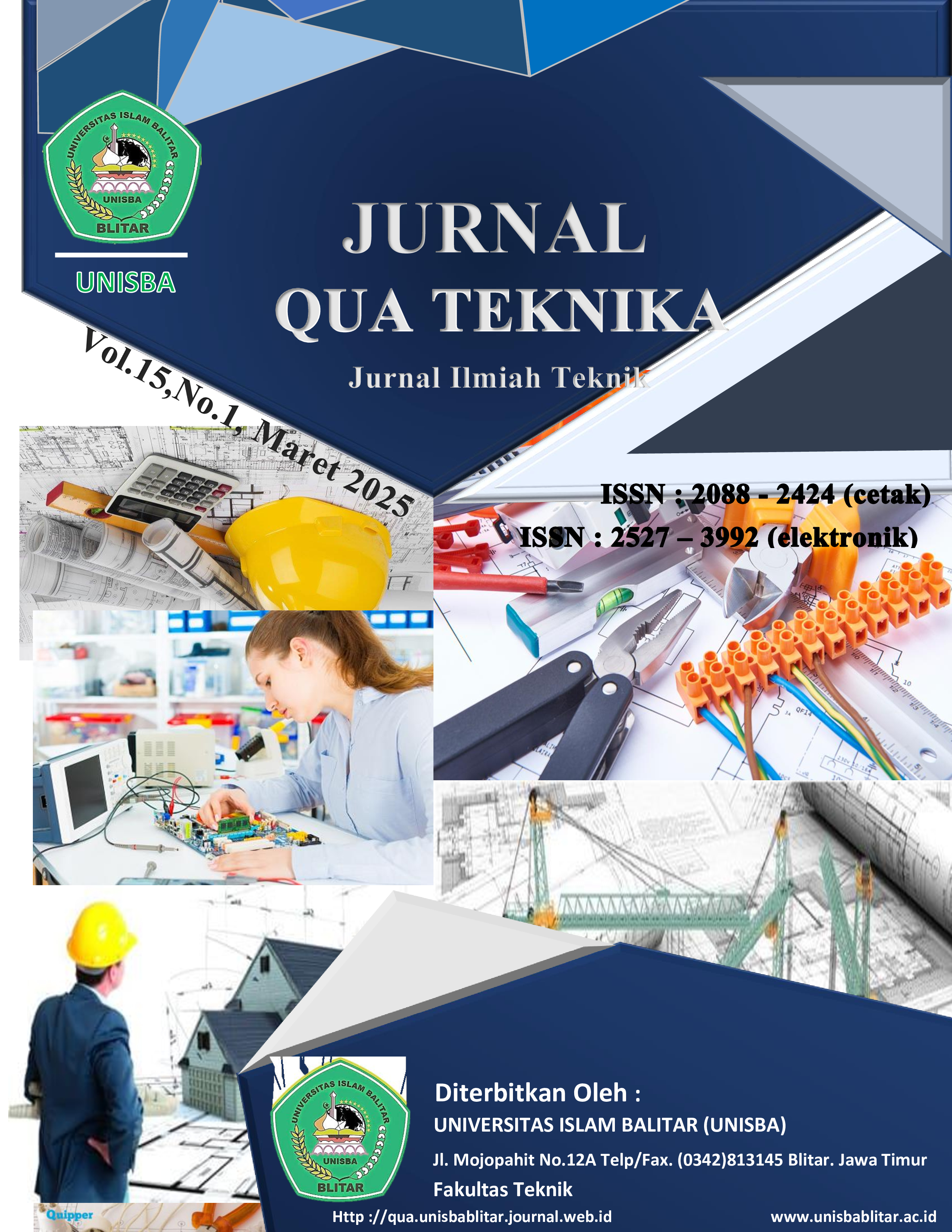Human Detection With Plant Bioelectric Signal
DOI:
https://doi.org/10.35457/quateknika.v15i01.4061Keywords:
bioelectric potential of plants, RNN, ROCAbstract
This research aims to utilize the bioelectric potential of plants as a tool to detect human presence in the surrounding area. The potential bioelectric signals of plants are recorded using a data logger and analyzed with the help of a computer for identification. Previous methods used time series models and Z-value tests, but challenges in achieving accurate estimates remain. We use Recurrent Neural Networks (RNN) to handle the processing of large datasets in this study. The experimental results show that the RNN model is very effective and achieves a high level of accuracy, with a perfect accuracy of 1.00 from the total duration of each class is 62030 seconds (379610 samples).303688 data samples are used as train datasets, while the others (75922 samples) are used as validation datasets This shows that RNN has great potential in processing plant bioelectric data to detect human presence with very high accuracy.
References
[2]Bai, Shaojie, J. Zico Kolter, and Vladlen Koltun. 2018. “An Empirical Evaluation of Generic Convolutional and Recurrent Networks for Sequence Modeling,” March. http://arxiv.org/abs/1803.01271.
[3]evidentlyai.com. n.d. “How to Explain the ROC Curve and ROC AUC Score?” Accessed June 13, 2024. https://www.evidentlyai.com/classification-metrics/explain-roc-curve.
[4]geeksforgeeks. n.d. “Teknik StandardScaler, MinMaxScaler Dan RobustScaler – ML.” Accessed June 2, 2024. https://www.geeksforgeeks.org/standardscaler-minmaxscaler-and-robustscaler-techniques-ml/.
[5]IBM. n.d. “What Are Recurrent Neural Networks?” Accessed May 20, 2024. https://www.ibm.com/topics/recurrent-neural-networks.
[6]Liu Xiaoze. n.d. “Study on the Application of Bioelectric Potential of Living Plants.” Accessed June 7, 2024. file:///C:/Users/USER/AppData/Local/Microsoft/Windows/INetCache/IE/N450H0VZ/poster[1].pdf.
[7] Muchlis, Choiri, Abd Rabi’, and Andrijani Sumarahinsih. n.d. “SNESTIK Seminar Nasional Teknik Elektro, Sistem Informasi, Dan Teknik Informatika Implementasi Dan Analisis Data Logger Potensi Biolistrik Tumbuhan Untuk Mendeteksi Keberadaan Manusia.” https://doi.org/10.31284/p.snestik.2023.4220.
[8] proclusacademy. n.d. “Robust Scaling: Why and How to Use It to Handle Outliers.” Accessed May 31, 2024. https://proclusacademy.com/blog/robust-scaler-outliers/.
[9] Sari, Anggraini Puspita, Hiroshi Suzuki, Takahiro Kitajima, Takashi Yasuno, Dwi Arman Prasetya, and Rahman Arifuddin. 2022. “Short-Term Wind Speed and Direction Forecasting by 3DCNN and Deep Convolutional LSTM.” IEEJ Transactions on Electrical and Electronic Engineering 17 (11): 1620–28. https://doi.org/10.1002/tee.23669.
[10]skicit learn. n.d. “Receiver Operating Characteristic (ROC) with Cross Validation.” Accessed May 23, 2024. https://scikit-learn.org/stable/auto_examples/model_selection/plot_roc_crossval.
[11]SkillPlus. n.d. “Data Training, Validation Dan Test.” Accessed May 30, 2024. https://www.baeldung.com/cs/training-validation-loss-deep-learning.
[12] Tahyudin, Imam, and Hidetaka Nambo. n.d. “Estimating Position of Bio Electric Potential Dataset as A Natural Sensor Using Time Series Approach.”
Downloads
Published
Issue
Section
License
Copyright (c) 2025 Jurnal Qua Teknika

This work is licensed under a Creative Commons Attribution-ShareAlike 4.0 International License.
Authors who publish with this journal agree to the following terms:
- Copyright on any article is retained by the author(s).
- Author grant the journal, right of first publication with the work simultaneously licensed under a Creative Commons Attribution License that allows others to share the work with an acknowledgement of the work’s authorship and initial publication in this journal.
- Authors are able to enter into separate, additional contractual arrangements for the non-exclusive distribution of the journal’s published version of the work (e.g., post it to an institutional repository or publish it in a book), with an acknowledgement of its initial publication in this journal.
- Authors are permitted and encouraged to post their work online (e.g., in institutional repositories or on their website) prior to and during the submission process, as it can lead to productive exchanges, as well as earlier and greater citation of published work.
- The article and any associated published material is distributed under the Creative Commons Attribution-ShareAlike 4.0 International License
Deprecated: json_decode(): Passing null to parameter #1 ($json) of type string is deprecated in /home/ejournal.unisbablitar.ac.id/public_html/plugins/generic/citations/CitationsPlugin.php on line 68










